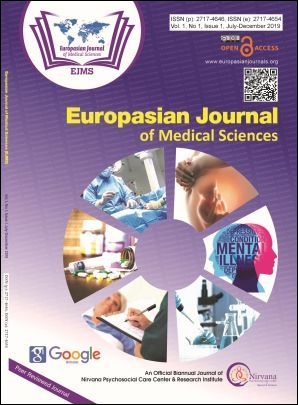Nasal index among Students of People’s Dental College and Hospital
Keywords:
Anthropometry, Mesorrhine, Nasal Index, Nasal AnthropometryAbstract
Introduction: Nasal anthropometry is a study that deals with the measurements of the proportion, size, and shape of nose. The nasal index is considered as one of the major landmarks for craniofacial surgery, gender differentiation, and ethnic identity. This study is aimed to provide baseline data of the nasal index of Nepalese people and to assess the gender variation which will be of clinical, surgical interest in rhinology and craniofacial prosthetic purpose.
Methods: BDS students from 17 to 25 years with various ethnicity were included in the study. A total of 160 students with an equal number of male and female students was included. Nasal parameters were measured and the nasal index was calculated for each student.
Result: The mean nasal index was 78.03±7.07 suggesting Mesorrhine type of nose. The nasal width and height show statistically significant difference whereas there was no significant difference found between the nasal indices of male and female students. Hill Janajati showed the highest nasal index followed by Newar, Brahmin and Chettri; and Others.
Conclusion: The study concludes the type of nose has an effect on gender when compared between the sex but the nasal index calculated to have a little contribution to sexual dimorphism. Mesorrhine nose were found to be most frequent. Among the population, Hill Janajati showed highest nasal index. We recommend a further study to compare the nasal index of various ethnical groups of Nepalese population.
Downloads
Downloads
Published
How to Cite
Issue
Section
License
The author(s) retain the ownership of the copyrights for their work published in EJMS without any restrictions. Upon submission, the author(s) grants EJMS a license to publish, including to display, store, copy, and reuse the published content.
License to Publish
By submitting a manuscript to EJMS, the author(s) grant the journal a non-exclusive license to:
- Publish and distribute the content in all formats, media, and platforms (both existing and future), while identifying EJMS as the original publisher.
- Reproduce, display, and store the content in both print and online formats, including institutional and digital repositories.
- Translate, adapt, and summarize the work, including reprints, extracts, and abstracts.
- Develop derivative works based on the original content.
- Include the work in electronic databases and provide links to third-party materials.
Creative Commons Licensing
In addition to EJMS’s publishing rights, authors grant third parties the right to use, share, and distribute their work under the Creative Commons Attribution 4.0 (CC BY 4.0) International License. This allows unrestricted use of the content, provided proper attribution is given to the original author(s) and the journal.

